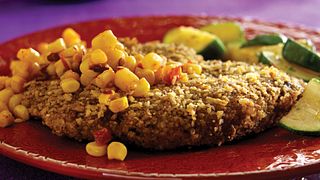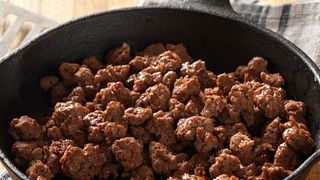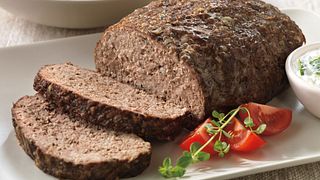🚚 The fastest delivery time : 2-day delivery.
Take the decision making out of your next meal. Explore classic beef dishes like meatloaf, chili, lasagna, meatballs, burgers and steaks. Whether it's for a quick and easy family dinner or a special occasion, our collections have a variety of choices for everyone!
Special Trim
Trim pieces from any primal section other than Shanks or Heels that are at least 8 square inches on one side and no less than 1.5 inches thick at any point. Bones and fat surface should be removed. Most often used for further processing into ingredient beef.
Chinese and English name of Beef
- 肩胛 Chuck
- 肋脊 Rib
- 腰脊 Loin
- 西冷 Sirloin
- 前胸 Brisket
- 胸腹 Plate
- 腹脇 Flank
- 腱子 Shank
- 臀腿 Hip&Round
Basically, beef parts are divided into eight major parts. According to the "US Export Beef Cuts Chart", they are divided into "Chunk", "Ribs", "Loin", "Brisket", "Plate", "Flank", "tendon | Shank", and "Hit Round |buttocks". The price, use, and taste of each part of beef are very different. "Frosted", "marbled", "under the feathers"... These are all aliases to describe meat. It is easy to confuse the names when there are too many aliases in the market. For example, the term "sirloin" refers to the sirloin (rib eye) in the ribs of Taiwanese people, but the back loin is also called sirloin, and there is a part on the lower shoulder called sirloin heart. If you don't understand the parts of beef and learn to identify the differences, you may spend money thinking you have bought high-priced beef, but you don't know that you have only bought low-priced meat, just because they are all called "marbled", "frost", and "sirloin".
What are beef trimmings?
Beef trimmings are an important part of the meat industry. They are often used to make ground beef, a staple in many households. These trimmings comprise the remaining pieces of meat that cannot be used for other cuts, such as steaks and roasts. While they may not be as visually appealing as other cuts, they are still edible and can be used in a variety of dishes.
Beef trimmings are a versatile kitchen ingredient. They can make soups, stews, tacos, and many other dishes. They can also be rendered into beef fat, which can be used for cooking and frying.
While some may be hesitant to use beef trimmings due to their association with processed foods, they can be a cost-effective and sustainable way to use all parts of the animal. When properly handled and cooked, beef trimmings can be a delicious and nutritious addition to a variety of meals.
Culinary Uses of Beef Trimmings: From Homemade Ground Beef to Sausages Beef trimmings have many culinary uses. One of the most common uses is to make homemade ground beef. Many home cooks prefer to make their own ground beef because they can control the fat content and the quality of the meat.
To make ground beef, beef trimmings are typically ground through a meat grinder or food processor. This process produces a coarser texture than store-bought ground beef and can add more flavor to dishes such as meatballs, burgers, and tacos beef.
In addition to ground beef, beef trimmings are also used in the production of sausages. They are often blended with other cuts of meat and spices to create a unique flavor profile. Sausages made with beef trimmings can range from mild to spicy and are often served with a variety of toppings and condiments.
Another culinary use of beef trimmings is rendering the fat for cooking purposes. Beef fat, also known as tallow, has a high smoke point and can be used for frying, sautéing, and roasting. It can also be used as a spread for bread or as a flavor enhancer in dishes such as mashed potatoes.
Rendering beef fat from beef trimmings is a simple process that involves heating the fat over low heat until it melts and separates from any impurities.
ColdMeatInc is your Chill Meat Refrigerator. We Take Good Care of your Meats.
We all know beef tastes great – but did you know that beef can be good for you, too? Check out some answers to your most pressing questions when it comes to beef and your health.
Health Professional Fact Sheets - Protein Benefits
Q: Can beef be enjoyed regularly as part of a healthy, balanced diet?
A: Absolutely! A 3-ounce serving of beef—about the size of an iPhone—provides more than 10 essential nutrients including protein, iron, zinc and vitamins B12 and B6. One serving of beef contains about half of your Daily Value for protein in around 170 calories on average (and just 150 calories for a serving of lean beef).1
Q: How much beef should I eat at a meal to meet my daily protein requirements?
A: Beef is a great protein option and source of essential nutrients to enjoy any day and for any meal! Dietary Guidelines recommend adults eat 5.5 ounces of protein foods, including beef, per day. Beef can be enjoyed for any meal throughout the day so incorporating beef into various meals will help you meet the recommended Dietary Guidelines.
Q: What benefits do the 10 essential nutrients in beef provide to the human body?
A: High-quality protein, like that found in beef, plays an increasingly important role in muscle maintenance, weight management, and the prevention of chronic diseases. Research also shows the iron, zinc and B vitamins found in beef play an essential role in developing and maintaining cognitive ability in children and adults.3
Q: What nutritional benefits does beef offer me that other proteins don’t?
A: Beef is a nutritional powerhouse in a smaller package than other protein foods. Apart from being a great source of protein, it would take 8 ounces of cooked chicken breast to eat the same amount of iron as in just 3 ounces of beef, and nearly 7 times (20 ounces) the amount of chicken to get the same amount of zinc in a serving of beef!
Q: Is grass-finished beef more nutritious than grain-finished beef?
A: While grass-finished beef tends to be a little leaner, both grass-finished and grain-finished beef are natural sources of more than 10 essential nutrients including protein, iron and zinc. All cattle, whether grass or grain-finished, spend the majority of their lives eating grass on pastures and provide delicious and nutritious beef.
Q: Can eating beef help improve cholesterol levels?
A: Yes! Research shows that a heart healthy diet and lifestyle that includes lean beef, even daily, improved cholesterol levels. About half the fatty acids found in beef are called monounsaturated fatty acids, the same kind found in olive oil, and, as part of a heart-healthy diet, can reduce cholesterol levels.
Q: Can plant-based diets and proteins provide the same amount of protein as beef?
A: Many sources of plant protein do not contain all the amino acids your body needs. Beef supplies more protein and nutrients in significantly fewer calories than plant proteins. A lean beef burger patty averages around 154 calories and 25 grams of protein. Conversely, a veggie burger patty may be lower in calories, but only contains 13 grams of protein per serving.
Q: Can eating beef cause cancer?
A: Cancer is a complex disease and most scientists agree that many factors, including lifestyle and environmental conditions, must be taken into consideration-- making it unrealistic to isolate a single food as a cause of cancer. In fact, despite all the investment made in cancer research, there is no single food, including beef, that has been proven to cause or cure cancer.
Q: Do higher-protein diets have any negative health effects like kidney damage or bone loss?
A: No, this is a common myth about protein. Eating a diet higher in protein can actually help people lose and maintain a healthy weight and support a healthy metabolism. Research shows that eating 25-30 grams of protein at each meal is ideal for optimal body benefits.
Reference
• U.S. Department of Agriculture, Agricultural Research Service, Nutrient Data Laboratory. USDA National Nutrient Database for Standard Reference, Release 28 (Slightly revised). Version Current: May 2016. Internet: http://www.ars.usda.gov/ba/bhnrc/ndl
• U.S. Department of Health and Human Services and U.S. Department of Agriculture. 2015–2020 Dietary Guidelines for Americans. 8th Edition. December 2015. Available at http://health.gov/dietaryguidelines/2015/guidelines/.
• Paddon-Jones D, et al. Protein, weight management, and satiety. Am J Clin Nutr 2008;87:1558S-61S.
• Wolfe, R. The underappreciated role of muscle in health and disease. Am J Clin Nutr 2006;84:475-82.
• Van Elswyk ME, McNeill SH. Impact of grass/forage feeding versus grain finishing on beef nutrients and sensory quality: the U.S. experience. Meat Sci 2014;96:535-40.
• Roussell MA, et al. Beef in an Optimal Lean Diet study: effects on lipids, lipoproteins, and apolipoproteins. Am J Clin Nutr 2012;95:9-16.
• Schoenfeld JD, Ioannidis JP. Is everything we eat associated with cancer? A systematic cookbook review. Am J Clin Nutr 2013;97:127-34.
• Miller PE, Alexander DD, Weed DL: Uncertainty of results in nutritional epidemiology. Nutr Today 2014;49:147–52.
• Phillips SM, et al. Protein "requirements" beyond the RDA: Implications for optimizing health. Appl Physiol Nutr Metab 2016;41:565-72.
• Wallace TC, Frankenfeld CL. Dietary protein intake above the current RDA and bone health: A systematic review and meta-analysis. J Am Coll Nutr 2017;36:481-96.

























